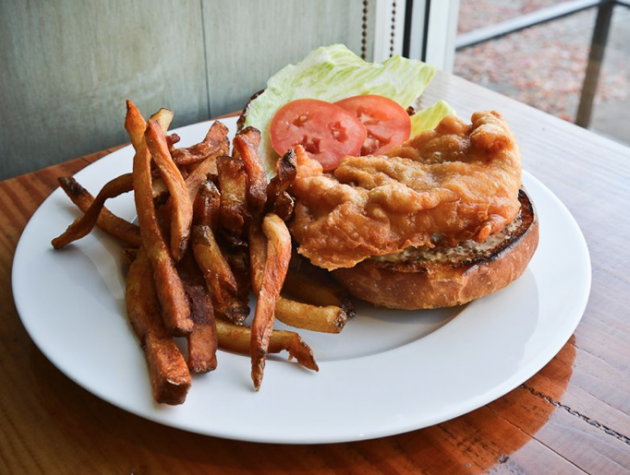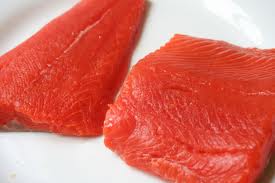Murray’s explosion into the Northwest: we now know that they know cheese
The culture of Lower Manhattan’s Greenwich Village has expanded into the greater Seattle area. Although we might strictly be speaking cheese, the legendary Murray’s Cheese has joined forces with The Kroger Co. (better known to Northwesterners as Fred Meyer and QFC) and is offering their elite selection of cultured cheese across the city. Founded in 1940 by Murray Greenberg, a man of many epithets including a capitalistic Communist, a Jewish veteran of the Spanish Civil War, a local family man and, most importantly, a lover of cheese and pioneer in the artisan cheese movement of the illustriously food-obsessed neighborhood. After 70-some years of running a monopoly on the Village’s cheese industry, Murray’s Cheese has managed to team up with one of the nation’s strongest grocery chains to bring craft cheese to the nation.
To get access to the world’s greatest cheese discoveries, the shot-callers of Murray’s span the globe in search of the new and notable artisan cheeses being produced from Vermont to the Basque Country, the farmlands of France and, of course, our own backyard in the Pacific Northwest.
Taking it one step further, the original Murray’s location has its own cheese caves with more than 100 cheeses ripening beneath the Bleecker Street shop. The temperature-and humidity-controlled caves allow the cheese to mature and reach their full flavor potential literally in-store. Overseen by a “Cave Master,” Murray’s ensures the cheese showcases the difference cave-aging makes.
Starting in March of 2012 with the University Village store, Murray’s Cheese shops have popped up in a select number of QFC locations in the Seattle area – and the Ballard Fred Meyer as of last weekend – and is bringing back nostalgia for east coast transplants and cheese-lovers alike.
“We certainly have seen a really big interest and the impact on the communities has been astounding — it was something people wanted,” says Amanda Parker, Murray’s Cheese Regional Director of Sales and Merchandising, who has been leading the charge on the expansion across the nation. “With the industry, we are able to continue to grow a wider audience’s understanding of cheese which benefits everybody. When we come into an area, we see the individual specialty shops increase in sales because we are beginning to educate a much bigger group of people.”
Parker says their expansion into more markets also allows the producers they work with to get their products into places they might not have been able to get into otherwise.
Although the range of cheese depends on the demands of the individual stores, Murray’s in QFCs are offering Seattleites a wider range of cheese than they are yet to see — including the usual suspects of the Northwest like Beecher’s, Mt. Townsend, Cascadia and Rogue creameries. The cheeses are laid out in the stores in an oval surrounding the educated and eager “cheese masters” who are happy to guide customers through the multiple sections of cheese that are organized by flavor profiles, pairings, textures and more.
Parker says from goat to cow, every milk type is different and recommends tasting and touring through each section to determine your preference. “Each type has its own chemical characteristics and that’s going to translate into the feeling in your mouth and the tastes or the heaviness or what type of flavor you’re going to get.”
 Eating: Tumalo Farms‘ “Pondhopper” — This semi-hard cheese that has been dried hopped with Cascade hops from the farms’ neighboring microbrewery in Bend, giving the goats’ milk cheese a unique bitterness to the already tangy and sharp cheese. A showstopper in macaroni and cheese as well as grilled cheese for its “goo factor,” the Pondhopper is a peculiar yet distinct local cheese to enjoy straight and in recipes.
Eating: Tumalo Farms‘ “Pondhopper” — This semi-hard cheese that has been dried hopped with Cascade hops from the farms’ neighboring microbrewery in Bend, giving the goats’ milk cheese a unique bitterness to the already tangy and sharp cheese. A showstopper in macaroni and cheese as well as grilled cheese for its “goo factor,” the Pondhopper is a peculiar yet distinct local cheese to enjoy straight and in recipes.
Drinking: English-style India Pale Ale — English-style IPAs vary in several ways from their Americanized counterpart, however, one main difference is the hop or variety of hop used. Although English-style IPAs tend to still have a solid bitter hop characteristic, they also rely equally on a caramel maltiness which balances out the bitterness and allows a nutty quality to come out of the beer.
Although Tumalo suggests a local Pinot Gris pairing which would do fine with its tangy acid complementary to that of the goat cheese, you’ve gotta go beer here.
“With beer, the bubbles work as windshield wipers to cut through the fat of the cheese,” says Parker about pairing with cheese. Going the route of hoppiness available in the cheese itself, a moderately hoppy yet sweet beer like an English IPA will stride alongside of the cheese, cut through when it needs to but doesn’t overwhelm the reason why we/Murray’s are all here.
The Specifics: Port Townsend Brewing Bitter End IPA — English in style though the hops used are from Washington, this IPA is approachable, easy drinking and showcases the mild hops with the equally mild malty yet citrusy flavor. With only 5.6% alcohol by volume (when most American-style IPAs can skyrocket anywhere between 6-8% on up), the IBUs (International Bitterness Units that detect just that in the hops) are at a lenient 60 (out of 100), creating a mild-mannered ale. The hops are most revealed on the nose, which, based on aromas alone, make it an ideal match for a cheese that mimics a beer.
Murray’s Cheese | Multiple QFC locations and now Fred Meyer Ballard, Seattle





